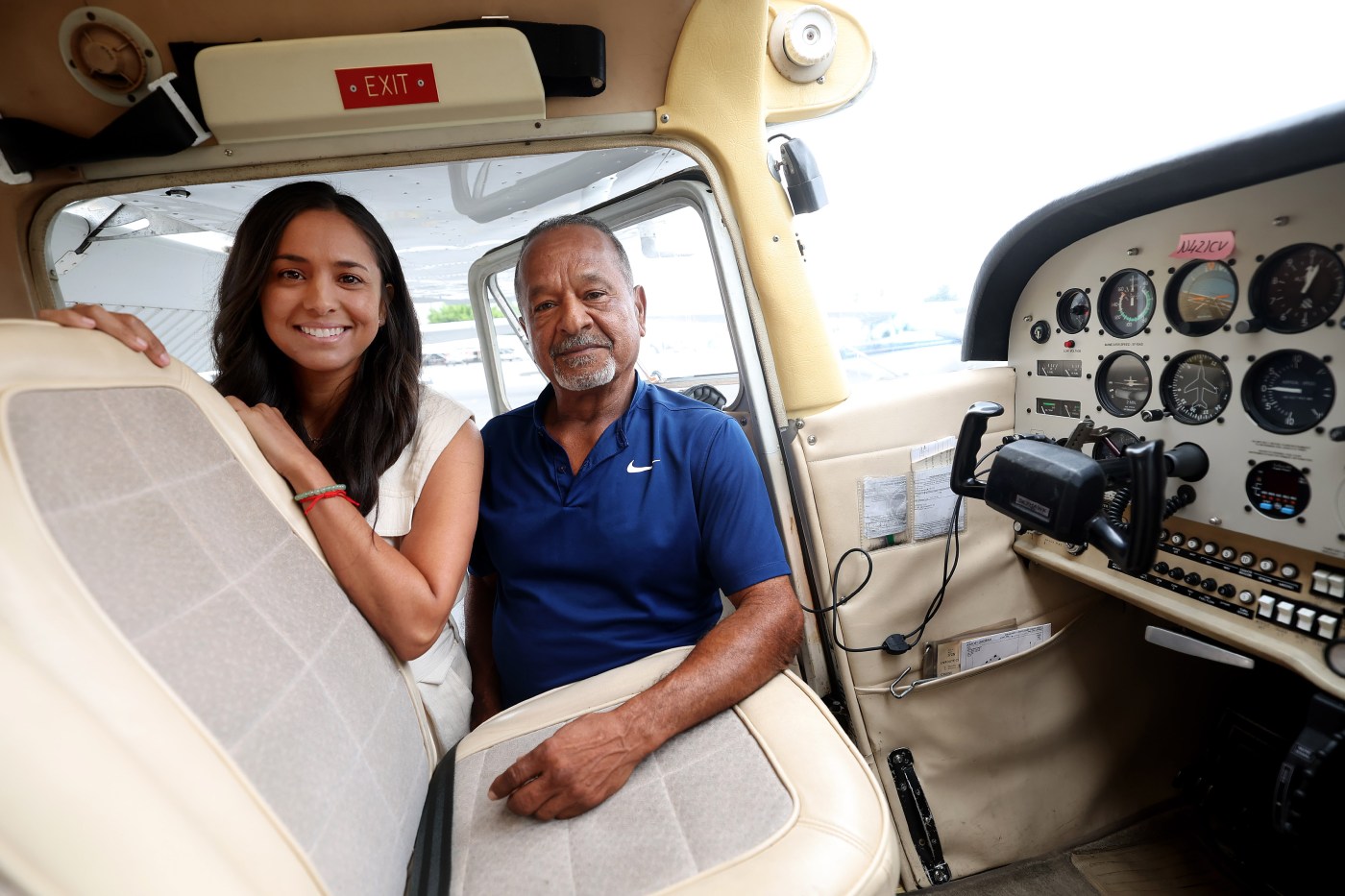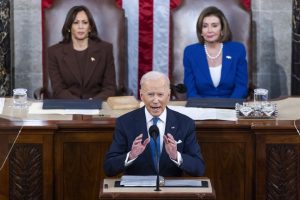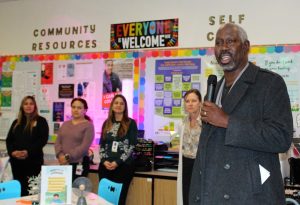East San Jose native and private pilot Michelle Galvis lived within five miles from Reid-Hillview Airport for 30 years and worked a number of jobs before she considered a career in aviation — and running her own business.
“I’ve always been behind the ball, I’ve always been trying to play catch-up my entire life,” Galvis said. “And so I have that classic Bay Area struggle where you’re just trying to make ends meet and try not to have a two-hour commute.”
Her uncle, George Rodriguez, was the owner of a welding company. Seeing how Galvis was always underestimated in the same way he was, he offered her the opportunity to work with him.
“Nobody gave me a chance in life, and I wanted to prove to people that maybe she can get it through me and what I went through to get what I got,” Rodriguez said.
Now, the pair are working together as the founders of Hera School, San Jose’s first nonprofit aviation academy, which opened on April 20 and began instruction in June.
While working together, the two bonded over their shared childhood experiences as “the underdogs of our family,” Galvis said, and they started taking flight training together.
“Once he gave me the opportunity to fly and he sponsored my private pilot license, I was like, ‘I wish I had had this opportunity sooner’ because I could have been much further along in my career in aviation and so that’s why the spirit of Hera was born,” Galvis said.
Galvis said they referred to themselves as an aviation academy because of the variety of services they offered, including private pilot training programs and a drone training program as they worked on obtaining a hangar for their airplane mechanic apprenticeship program.
The school was founded with three goals in mind, the pair say: breaking the glass ceiling for women entering careers in aviation, involving the nearby East San Jose community in airport operations and serving as a resource for that community.
According to Pilot Institute, women made up less than 10% of all pilots in 2022. A 2023 study analyzing women and ethnic minorities in commercial aviation stated that 6.1% of all aircraft pilots and flight engineers were Latino or Hispanic in 2021, according to data from the U.S. Bureau of Labor Statistics.
“I think one common misconception is, ‘Success is linear, there’s only one way to making a decent living in this area,’ and that’s not the case. And this opens up so many opportunities,” Galvis said.
The school offers two nonprofit programs and one discounted program for students to earn their private pilot license. Classes are available for aspiring pilots as young as 16.5 years old, at costs significantly lower than the Aircraft Owners and Pilots Association’s estimate of between $6,000 and $20,000 for pilot training.
Hera School is self-funded while they continue to find scholarships for their students and grants to maintain the flight school. The school operates out of a space rented out to them by Hiro Takai , owner of nearby flight school Nice Air, which helps keep costs low.
“We needed this competition. We have to share with the students,” Takai said. “Every school has its unique program, everybody knows each other. Especially at this airport, everybody, friend. Every school, friend.”
To maintain the affordability of their programs, Hera School also holds weekly ground classes and provide books and headsets to the students. They also have an electronics library and loan iPads to their students. A flight simulator is also kept at the school.
The school only has one plane, a Cessna-172 single-engine plane with fixed landing gear, which Rodriguez bought after selling an older plane.
George Rodriguez, a cofounder of Hera School of Flying, checks on the preparation of a Cessna, Saturday, July 27, 2024, at Reid-Hillview Airport in San Jose, Calif. (Karl Mondon/ Bay Area News Group)
“We don’t want to create too many hurdles for students to have to jump through. We want to make it easy and accessible to them,” said Adalia Herrera, executive director of Hera School.
Hera School formed out of the many connections that Galvis and Rodriguez had made, making people in the aviation community available to mentor students.
Galvis, Herrera and board secretary Alexandra Hames worked together to reach out to the community and promote the school, knocking on doors and presenting at churches throughout nearby neighborhoods. When the school opened, it garnered the support of the League of United Latin American Citizens, CompassPoint Mentorship and the Experimental Aircraft Association.
“Typically, you don’t envision Latina women as pilots, they make up a very, very low percentage of pilots overall, and I think that’s something that can definitely change,” Hames said.
Nitin Selvamani instructs students Amaris Ayon-Zarate, 16, and Karina Maciel, 26, at Hera School of Flying, Saturday, July 27, 2024, at Reid-Hillview Airport in San Jose, Calif. (Karl Mondon/ Bay Area News Group)
One of the school’s first student, Karina Maciel , 26, of San Jose, saw Galvis give a presentation on Hera School at her church.
Maciel said she came to Hera School’s grand opening with the hopes of attaining her private pilot license, fulfilling a longtime interest in flying. She added that she hopes to then earn her commercial pilot license and become a flight instructor and continue training female students.
Related Articles
Walters: Newsom brags about California economy, but jobs data tells a different story
How will Chevron’s move to Texas affect the East Bay?
California bosses ranked third-best in US
Chevron to move headquarters from Bay Area to Texas after warning about regulation
Intel plans massive layoffs that will slash 15,000 workers worldwide
“I grew up on the east side of San Jose, it’s kind of like that lack of knowledge of these kinds of opportunities are out there, especially for the females but for everybody in the community,” Maciel said.
Amaris Ayon Zarate , a high school student in San Jose, was also interested in aviation as a hobby and a career, but was initially deterred from it because of how expensive the cost of training is. Zarate said Hera School would give her the opportunity to get her private and commercial licenses. She said she hopes to fly for the Air Force in the future.
As Galvis looks to the future of the school, she said the next steps are to expand their fleet of airplanes and provide transportation for students from their schools to the airport. Herrera said that she will continue to look for grants to keep the school running.
“This is something we’re doing for love. We’re not getting rich, we’re not making any money right now. We want that self-satisfaction,” Rodriguez said.












